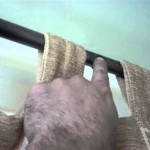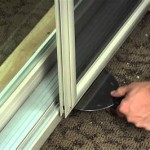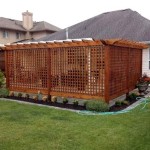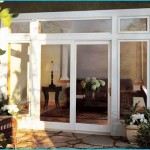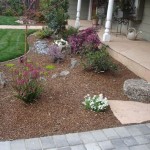How To Build A Cat Enclosure on an Apartment Patio
For cat owners residing in apartments, providing an enriching outdoor experience for their feline companions can be a challenge. An apartment patio, however, presents a viable opportunity to create a safe and stimulating environment. Constructing a cat enclosure, often referred to as a "catio," allows cats to enjoy fresh air, sunlight, and outdoor sights and sounds while remaining protected from hazards such as traffic, predators, and escape. The following article outlines a detailed process for designing and building a cat enclosure on an apartment patio, considering safety, practicality, and apartment living regulations.
Before embarking on the construction process, meticulous planning is paramount. This initial phase involves assessing the available space, understanding apartment complex regulations, and formulating a design that meets the cat's needs and the owner's aesthetic preferences. Neglecting this preliminary stage can lead to unforeseen complications and potential violations of lease agreements.
I. Initial Planning and Considerations
The first step in creating a suitable cat enclosure is to thoroughly evaluate the existing apartment patio. Measurements of the patio's length, width, and height are essential for determining the enclosure's potential size and configuration. Careful consideration should be given to any existing structures or features on the patio, such as railings, walls, or support columns, as these elements may influence the design and construction methods. It is also important to assess the patio's orientation to the sun, as this will impact the amount of sunlight the cat enclosure receives throughout the day, which can affect the cat's comfort and well-being.
Perhaps the most critical aspect of the planning phase is to review the apartment complex's rules and regulations regarding modifications to the patio. Many apartment complexes have specific guidelines concerning alterations to the exterior of the building, including the installation of enclosures or structures. Obtaining written permission from the landlord or property management company is crucial to avoid potential lease violations, fines, or the forced removal of the enclosure. The planned enclosure design should be presented in detail, including materials to be used, dimensions, and construction methods. It's also recommended to inquire about any restrictions on the height, color, or type of materials that can be used.
The needs of the cat are central to the design of the enclosure. Consider the cat's activity level, age, and personality. Some cats enjoy climbing and exploring, while others prefer lounging and observing their surroundings. Incorporating elements such as shelves, ramps, scratching posts, and comfortable resting areas can enhance the cat's enjoyment of the enclosure. The size of the enclosure should be adequate to allow the cat to move freely and engage in natural behaviors. Additionally, the enclosure should provide protection from the elements, including rain, wind, and excessive sunlight. This may involve incorporating features such as a roof, side panels, or shade cloth.
Finally, budget considerations should be addressed in the planning phase. The cost of building a cat enclosure can vary depending on the size, materials, and complexity of the design. Researching the prices of different materials, such as wire mesh, wood, and hardware, is essential for creating a realistic budget. It may also be necessary to factor in the cost of tools, fasteners, and any professional assistance required. Comparing prices from different suppliers can help to minimize expenses. It's wise to add a contingency to the budget to account for unexpected costs or changes to the design.
II. Material Selection and Construction Techniques
The selection of appropriate materials is crucial for ensuring the safety, durability, and aesthetics of the cat enclosure. The materials should be non-toxic, weather-resistant, and capable of withstanding the cat's weight and activity. Furthermore, the materials should be chosen to integrate with the existing aesthetics of the apartment patio and building.
Wire mesh is a common material used for the walls and roof of cat enclosures. It provides excellent ventilation and allows the cat to see its surroundings. Choose a wire mesh with a small enough gauge to prevent the cat from escaping or getting its paws caught. Galvanized or powder-coated wire mesh offers improved rust resistance and durability. Hardware cloth, a type of woven wire mesh, is often preferred for its strength and resistance to chewing or scratching. The mesh should be securely attached to the frame using staples, screws, or wire ties.
The frame of the enclosure can be constructed from various materials, including wood, metal, or PVC pipes. Wood is a versatile and aesthetically pleasing option, but it requires regular maintenance to prevent rot and decay. Pressure-treated lumber is recommended for outdoor use, as it is resistant to moisture and insect infestations. Metal frames offer superior strength and durability, but they can be more expensive and require specialized tools for cutting and welding. PVC pipes are a lightweight and cost-effective option, but they may not be as sturdy as wood or metal. The frame should be designed to provide adequate support for the wire mesh and any other features, such as shelves or ramps. All corners should be reinforced to prevent sagging or collapsing.
Fasteners, such as screws, nails, and staples, should be chosen based on the materials being used and the intended application. Stainless steel fasteners are recommended for outdoor use, as they are resistant to corrosion. The fasteners should be long enough to securely hold the materials together but not so long that they protrude and pose a hazard to the cat. When using screws, pre-drilling pilot holes can prevent the wood from splitting. When using staples, ensure they are driven flush with the surface to avoid scratching the cat or creating sharp edges.
Construction techniques should prioritize safety and stability. The enclosure should be securely attached to the patio floor or railing to prevent it from tipping over or being blown away by the wind. This can be achieved using brackets, straps, or anchors. Any gaps or openings in the enclosure should be sealed to prevent the cat from escaping or small animals from entering. The interior of the enclosure should be free of sharp edges, protruding nails, or other hazards that could injure the cat. Shelves and ramps should be securely fastened and designed to support the cat's weight. Regular inspections of the enclosure are necessary to identify and address any signs of wear and tear.
III. Safety, Enrichment, and Maintenance
Ensuring the safety and well-being of the cat is paramount when designing and building a cat enclosure. The enclosure should be designed to protect the cat from external hazards, provide a stimulating environment, and facilitate regular cleaning and maintenance.
The enclosure should be designed to prevent the cat from escaping. All gaps or openings should be sealed with wire mesh or other appropriate materials. The height of the enclosure should be sufficient to prevent the cat from jumping over the top. If the enclosure is open at the top, consider installing a deterrent, such as an overhanging mesh panel or a section of smooth plastic sheeting, to discourage the cat from attempting to climb out. The door of the enclosure should be securely latched to prevent accidental openings. A double-door system can provide an extra layer of security, preventing the cat from escaping while the owner is entering or exiting the enclosure.
Enrichment is essential for maintaining the cat's physical and mental well-being. The enclosure should include a variety of features that stimulate the cat's natural behaviors, such as climbing, scratching, and exploring. Shelves and ramps can provide opportunities for climbing and perching. Scratching posts or pads can satisfy the cat's urge to scratch and prevent damage to furniture. Toys, such as balls, feathers, or laser pointers, can provide opportunities for play and exercise. A comfortable resting area, such as a cat bed or hammock, can provide a place for the cat to relax and sleep. Providing a variety of different textures and surfaces can also enhance the cat's sensory experience. Access to a litter box is also necessary inside the enclosure.
Regular cleaning and maintenance are essential for maintaining the hygiene and safety of the cat enclosure. The enclosure should be cleaned regularly to remove dirt, debris, and waste. The floor should be swept or vacuumed to prevent the accumulation of dust and allergens. Water bowls should be cleaned and refilled daily. The litter box should be scooped regularly. The enclosure should be inspected regularly for signs of damage or wear and tear. Any repairs or replacements should be made promptly to prevent further damage or hazards. Weather-exposed wood should be treated every year to protect it from the elements. Maintaining the enclosure is essential for the long-term health and happiness of the cat.
By carefully considering these factors, apartment dwellers can create a safe, comfortable, and stimulating outdoor environment for their feline companions on their patios. A well-designed cat enclosure can enhance the cat's quality of life and provide peace of mind for the owner.

How To Build A Catio Bechewy

How To Build A Catio For Your Cat Bc Spca

Catios For Small Spaces Catio

How To Build A Mini Catio On Balcony Diy No Permanent Modifications

30 Free Diy Catio Plans Outdoor Cat Enclosure

Catio Apartment Balcony 8 Diy Ideas Tinktube

How To Build A Catio For Your Cat Bc Spca

Catios For Small Spaces Catio

Catio For Apartment Balcony Future Will Be Similar To This Except More Square And Maybe Taller With Room A Grass Bed Cat Patio Enclosure Pet
:max_bytes(150000):strip_icc()/cuckoo4design-0f048ace0e6d4421860f75227604b0d8.jpg?strip=all)
9 Free Diy Catio Plans
Related Posts


